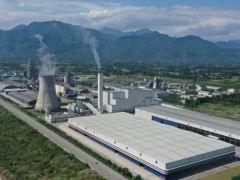据油价网2月6日消息称,贝克休斯的首席执行官Lorenzo Simonelli在今年的公司年度会议上的主题演讲中说:“油气资源不会消失。”与该行业的其他高管一样,Simonelli承认并欢迎能源转型,但他指出,实现100%的可再生能源是不可能的。尽管许多环保人士抱有希望和雄心,但有大量证据表明情况确实如此。
这些希望和雄心设想了这样一个世界:人类活动仅由电力提供动力,而这些电力反过来也仅使用太阳能、风能和水电等可再生能源来发电。
然而,这样的世界是不现实的。
以德国为例。该国是拥有最多可再生能源产能的欧盟成员国之一,但自今年年初以来,该国没有通过太阳能生产过一瓦电。原因是:现在是冬天。它正在通过大量的风能生产电,这是肯定的,但它也在用最受鄙视的化石燃料—煤炭发电。
在撰写本文时,其碳强度为每千瓦时264克二氧化碳当量。这与欧洲另一个可再生能源的模范国家丹麦的碳强度相当,丹麦目前的大部分能源来自风力发电。
因此,似乎建立可再生能源本身并不是解决排放问题的灵丹妙药。事实上,如果你建得太快而没有增加足够的存储容量,可能会适得其反。最近,克罗地亚变电站的一个小问题引发了欧洲的大面积停电,这一事件波及整个欧洲大陆,凸显了保持电网频率恒定的重要性——可再生能源由于间歇性发电而无法做到这一点。
即使是丹麦也有火力发电厂,以确保任何电网正常运行所需的基本负荷,并消除或至少减少停电的风险。
回到Simonelli关于石油和天然气有保障的未来的预测。这个未来不会像过去一样。世界正在坚定地改变其产生和使用能源的方式。
首先,能源效率将是这一转变的重要组成部分。
最近,效率已经被人们淡出了视线,取而代之的是绿色氢燃料和持续减排的理念,但它并没有消失。根据贝克休斯Simellielli的说法,仅靠效率就可以帮助实现巴黎协议中27%的气候变化目标。在全球范围内,这是一个巨大的减排量,每年减少5亿吨。
除了提高效率外,大型石油公司还在投资者、监管机构和维权人士的压力下做出了各种承诺。每一个超级巨头现在都有一个可再生能源转型计划,有些比其他的更雄心勃勃。所有这些计划都涉及将数十亿美元投入这些公司的核心业务—从地下开采石油和天然气,当然,这是以碳和甲烷排放为代价的。
曹海斌 摘译自 油价网
原文如下:
FOSSIL FUELS AREN’T GOING ANYWHERe
“There is no scenario where hydrocarbons disappear,” the chief executive of Baker Hughes, Lorenzo Simonelli, said during his keynote speech at this year’s annual meeting in the company. Like other executives from the industry, Simonelli acknowledged and welcomed the energy transition, but he noted that a 100-percent renewable energy scenario was simply not possible. There is plenty of evidence this is indeed the case, despite the hopes and ambitions of many environmental advocates.
These hopes and ambitions imagine a world where human activity is powered from electricity only, and this electricity in turn is being generated using only renewable energy sources such as solar, wind, and hydropower.
Such a world, however, is unrealistic.
Take Germany, for example. The country, which is among the EU members with the most renewable energy capacity, has not produced a single Watt of solar energy since the start of this year. The reason: it’s winter. It is producing solid amounts of wind power, that’s for sure, but it is also generating power from the most despised fossil fuel of all: coal.
At the time of writing its carbon intensity was 264 grams of CO2 equivalent per kWh. That was comparable to the carbon intensity of another poster girl for renewables in Europe, Denmark, which is currently getting most of its energy from wind power.
So, it seems building renewable capacity in itself is not a silver bullet solution to the emissions problem. In fact, if you build it too quickly without adding substantial storage capacity, it could backfire. This was most recently evidenced by a narrow miss of a major blackout in Europe prompted by a minor problem at a Croatian substation that rippled through the continent, highlighting the importance of maintaining the grid at a constant frequency—something renewables cannot do because of their intermittent generation.
Even Denmark has thermal power plants to secure the baseload any grid needs to function properly and eliminate or at least reduce the risk of blackouts.
But back to Simonelli’s prediction about the guaranteed future of oil and gas. This future won’t be like the past. The world is firmly on course to change the way it generates and uses energy.
Energy efficiency, for one, will be a big part of the transition.
Efficiency has been pushed out of the spotlight recently, replaced by things like green hydrogen and the constant emission-reduction narrative, but it has not gone away. According to Baker Huges’ Simonelli, efficiency alone could help meet as much as 27 percent of the Paris Agreement climate change targets. On a global scale, this is a massive amount of emissions cut, at a rate of half a gigaton annually.
In addition to efficiency, there are all the commitments Big Oil is making under pressure from investors, regulators, and activists. Every supermajor now has a renewable energy transition plan, some more ambitious than others. All the plans, however, involve pouring billions of dollars into what is essentially a move away from these companies’ core business of extracting oil and gas from the ground, at a carbon and methane emission cost, of course.







